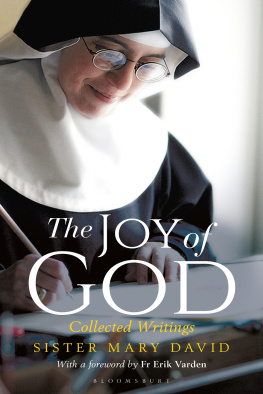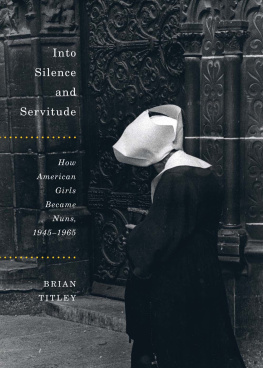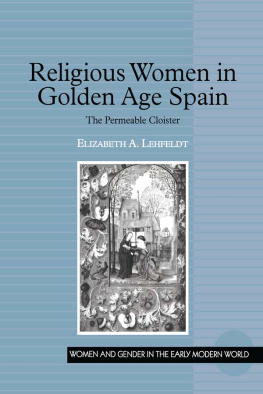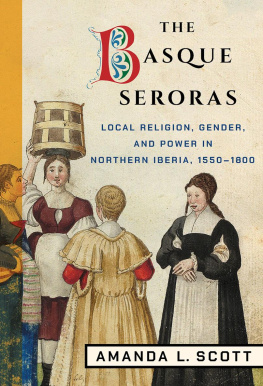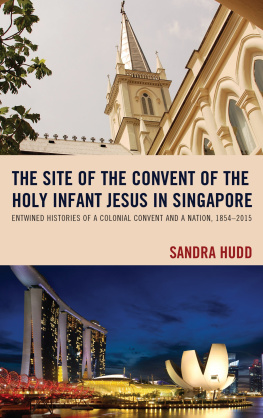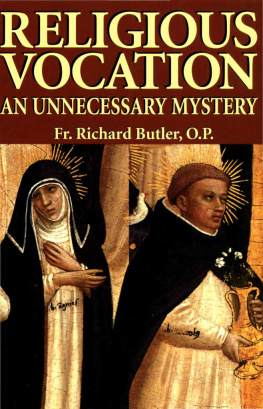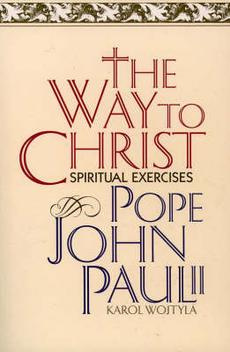Stanford University Press,
Stanford, California
2008 by the Board of Trustees of the
Leland Stanford Junior University.
All rights reserved.
No part of this book may be reproduced or transmitted
in any form or by any means, electronic or mechanical,
including photocopying and recording, or in
any information storage or retrieval system without the
prior written permission of Stanford University Press.
Printed in the United States of America on acid-free,
archival-quality paper
Library of Congress Cataloging-in-Publication Data Lavrin, Asuncin.
Brides of Christ : Conventual life in Colonial Mexico / Asuncin Lavrin. p. cm.
Includes bibliographical references and index.
9780804787512
1. Monastic and religious life of womenMexicoHistory. 2. MexicoChurch history. I. Title.
BX4220.M4L38 2007
271.90072dc22
2007012402
Typeset by Westchester Book Group in 10/12 Sabon
Acknowledgments
This project began with a grant from the National Endowment of the Humanities that allowed me to return to the archives in Mexico and Spain and to the topic, which I had abandoned for several years while I was engaged in other research projects. Once I returned to the study of nuns and convents, I decided that my project would focus on the inner life of the convent. It was almost like starting my research over again, but I have been rewarded with a lively historical view of life in the intimate spaces of those women who sought to separate themselves from worldly cares to pursue a spiritual goal. For them, there was no other way of distancing themselves from their own world except by seeking claustration forever. The blending of spirituality and material concerns in womens monasteries created fascinating worlds within worlds that repeatedly surprise those of us who step into the past to recover whatever we can from them. Those once elusive figures of robed women come to life bearing strong wills, unexpected abilities, and deeply felt convictions and faith. Conventual life, in fact, deserves examination in more than one book. As an author, I hope that this project will inspire other historians to pursue further research and expand on themes that could not be accommodated or explored in full here.
On the path to completing this book, I have been helped by many people and institutions. The National Endowment for the Humanities and the Womens Studies Department at the Arizona State University awarded much appreciated grants. One of them enabled my then graduate student, and today Dr. Maria Eva Flores, OCD, to help transcribe the manuscript of Sor Mara de Jess Felipa. The Library of Congress and the Hispanic Division were my library resource centers for many years until I moved to Arizona. Its director Georgette Dorn, and the late Dolores Martin, Editor in Chief of the Handbook of Latin American Studies, were loyal supporters of my research. I thank Dr. Dorn and render tribute to the memory of Dolores Martin, a great friend. Staff members such as Everett Larson and Barbara Tennenbaum were also extremely helpful and always gracious in my numerous searches for titles.
In Mexico City, the staff of the National Library and the National Archives of the Nation, some of whom I have known for decades, will always be remembered as the silent but cheerful conveyors of archival materials. Dr. Manuel Ramos Medina has been one of the pillars of my engagement with nuns and nunneries, a topic also dear to his heart. As director of the Center for Historical Studies on Mexico at the research library of Condumex, Dr. Ramos Medina has been extremely generous with his hospitality and the use of the library resources. Dr. Rosalva Loreto Lpez has been a very special and close friend and collaborator for many years. We have worked together on the co-edition of two books on the writings of nuns and beatas in Mexico and Spanish America. Her scholarship and dedication to history are exemplary and have been a source of inspiration to me. My Mexican colleagues Antonio Rubial Garca and Pilar Gonzalbo, both experts on colonial history, have offered their suggestions and friendship, as well as their extensive knowledge of viceregal New Spain. Thanks are also due to historians Mara Agueda Mndez and Mara Dolores Bravo, for providing some important archival materials and many insights. Other academic colleagues who work on nuns and beatas in Spanish America, such as Professors Alicia Fraschina, Nela Rio, Ellen Gunnarsdottir, Kathleen Myers, Alejandra Araya, Ximena Aza, Luca Invernizzi, Elia Armacanqui, Fernando Iturburu, Kathleen Myers, Kathryn Burns, and Jennifer Eich, have, in many ways, helped me to understand the meaning of religious writing by women not only in Mexico but in the rest of Spanish America. Jennifer Eich and Manuel Ramos Medina shared with me the writings of Mara Anna Agueda de San Ignacio, for which I am very thankful. Georgina Sabat de Rivers and her husband Elias Rivers, longtime friends and distinguished literary critics, have also been helpful with the interpretation of some sources. To Pilar Foz y Foz, of the Company of Mary, an Order with deep roots in womens education, go my thanks for her interest in my work and the insights provided by her own research. Drs. Nancy Van Deusen and Nina Scott, good friends and colleagues, read the manuscript and offered much appreciated advice to enhance its quality. I am deeply in debt to both of them. Thanks are also due to Scott Walker, of ASU, who helped with the footnotes.
My friends and colleagues, Edith Couturier and Dauril Alden, have given moral and intellectual support to this and previous research projects. Professor Alden read most of the manuscript and administered the hard medicine of critique, so necessary for the success of any book in the process of becoming. I owe them many years of friendship for which there is not enough payment, but they have my most heartfelt thanks. My late husband David was a reader of all my work, bearing that task with exemplary fortitude while providing many stylistic suggestions. We were together for many years and he offered constant support for my academic career. He was also a loving husband and father. While he is no longer by my side walking the path of life with me, his memory is embedded in the pages of this book. The rest of my family, children Andrew and Cecilia, and grandchildren Nora and Erik, had nothing to do with the writing of this book, but being an essential part of my life, they have contributed much to it with their presence.


